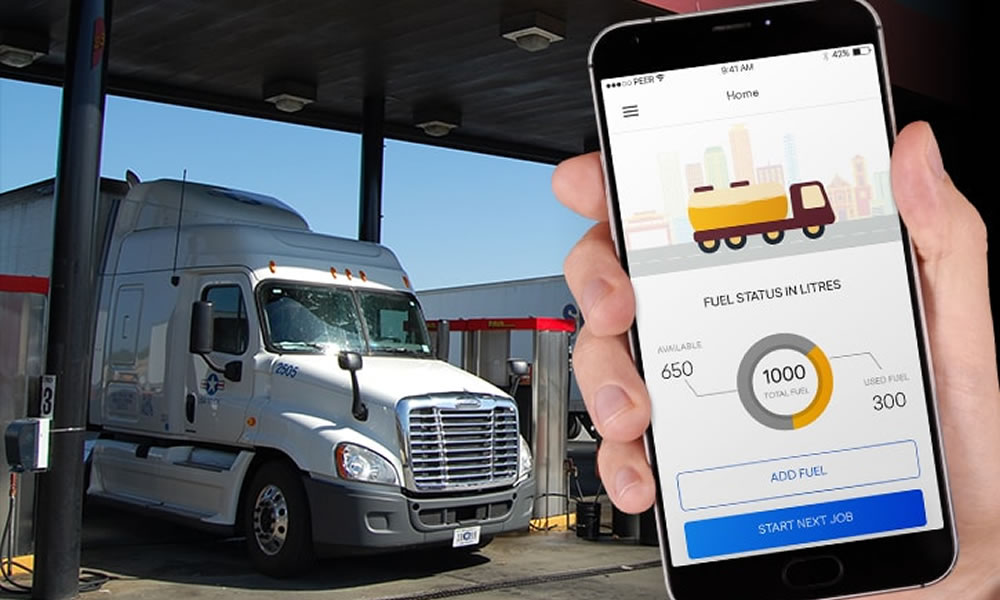Managing fuel efficiency and tracking expenses has become a priority for drivers who want to save money and reduce their environmental impact. With the advent of smart apps, this process has become simpler and more accurate. These apps empower users to log, analyze, and optimize their fuel consumption and vehicle-related expenses. This guide will delve into how you can efficiently track fuel efficiency and expenses using smart apps.
The Importance of Tracking Fuel Efficiency and Expenses
Tracking your fuel efficiency and expenses offers significant advantages:
- Financial Benefits: Monitoring fuel consumption helps drivers identify cost-saving opportunities and avoid overspending on inefficient driving habits or routes.
- Environmental Impact: Lower fuel usage directly reduces carbon emissions, contributing to a greener planet.
- Vehicle Health: Regular monitoring of fuel efficiency can reveal issues such as poor tire pressure or engine inefficiency that need attention.
- Data-Driven Decisions: Accurate records allow drivers to make informed decisions about driving habits, vehicle maintenance, and route planning.
How Smart Apps Work for Tracking Fuel and Expenses
Smart apps leverage technology to simplify tracking and analysis. Here’s how they work:
- Core Functionalities: Most apps allow users to log details like fuel-ups, odometer readings, and the cost per liter/gallon. This data is used to calculate mileage and fuel efficiency metrics such as MPG or L/100km.
- Data Input: Users can manually enter data or use features like photo scanning of receipts for automation.
- Automation Features: Advanced apps sync with GPS, OBD2 devices, or even payment systems to fetch real-time data without manual input.
- Data Analysis: Apps generate detailed reports on fuel economy trends, total expenses, and efficiency per route, helping users optimize their driving and spending habits.
Features to Look for in a Smart Fuel and Expense Tracking App
When choosing an app, consider the following features:
- Ease of Use: A clean, intuitive interface ensures easy navigation and quick data entry.
- Integration: Look for apps that sync with OBD2 devices, GPS, or vehicle management systems for accurate and real-time data.
- Advanced Analytics: Choose apps that provide trends, insights, and actionable recommendations for better fuel efficiency.
- Expense Categorization: Some apps allow categorization of expenses like maintenance, tolls, and parking fees in addition to fuel.
- Cloud Storage: Apps offering data backup and cross-device syncing ensure you never lose important records.
- Customization: Alerts for maintenance, reminders for fuel-ups, and personalized reports add value for users with specific needs.
Step-by-Step Guide to Tracking Fuel Efficiency and Expenses Using Apps
Step 1: Choose the Right App
Select an app based on your needs and preferences. For instance:
- Fuelly: Focused on fuel economy and driving habits.
- Drivvo: Includes detailed expense tracking and reporting.
- GasBuddy: Helps find the cheapest fuel prices in your area.
Step 2: Set Up the App
Input essential details such as your vehicle’s make, model, fuel type, and odometer reading. Many apps allow integration with OBD2 devices or GPS for automatic data collection.
Step 3: Log Fuel Data
Every time you refuel, record the amount, cost, and odometer reading. Some apps let you scan receipts for automatic entry. This creates a comprehensive log of your fuel consumption.
Step 4: Track Expenses
Beyond fuel, categorize other costs such as maintenance, insurance, tolls, and repairs. This holistic view helps you manage your vehicle budget effectively.
Step 5: Analyze Reports
Review the app’s generated reports, which may include:
- Mileage trends over time.
- Cost per mile or kilometer.
- Routes with higher or lower fuel efficiency.
Use this information to identify inefficiencies and make data-driven improvements to your driving habits.
![]()
Best Apps for Tracking Fuel Efficiency and Expenses
Fuelly (Gas Cubby)
-
- Tracks mileage, expenses, and maintenance.
- Cloud sync ensures access to records across devices.
- Ideal for eco-conscious drivers focused on improving efficiency.
Drivvo
-
- Offers detailed expense tracking and maintenance reminders.
- Generates reports on fuel efficiency and vehicle costs.
- Great for users with tight budgets.
Simply Auto
-
- Supports multiple vehicles, perfect for families or small businesses.
- Provides fuel efficiency analysis and detailed reports.
GasBuddy
-
- Locates low-cost fuel stations in real-time.
- Ideal for saving money on fuel purchases during long drives.
MileIQ
-
- Automated mileage tracking with expense categorization.
- Best for business owners needing detailed records for reimbursements or tax purposes.
Benefits of Using Smart Apps for Fuel and Expense Tracking
- Cost Savings: Identify inefficiencies and adjust driving habits or routes to save money.
- Improved Driving Habits: Apps provide insights into driving patterns that affect fuel efficiency.
- Time Efficiency: Automated logging and real-time updates save time compared to manual record-keeping.
- Data Accessibility: Centralized data storage ensures all records are in one place for easy access.
- Tax Benefits: Detailed logs simplify mileage deductions and reimbursement claims for business-related travel.
Challenges and Limitations of Using Apps
- Data Accuracy: Manual entries may lead to errors if not recorded correctly.
- Subscription Costs: Premium features or advanced analytics may come with additional costs.
- Compatibility Issues: Not all apps integrate seamlessly with every vehicle or operating system.
- Privacy Concerns: Sharing vehicle and location data with apps may pose security risks.
Tips to Maximize Fuel Efficiency and Optimize Expenses
- Maintain Your Vehicle: Ensure regular servicing, proper tire pressure, and timely oil changes to improve fuel efficiency.
- Drive Smart: Avoid idling, sudden acceleration, and high speeds, which consume more fuel.
- Plan Routes: Use apps to identify optimal routes with fewer stops and lighter traffic.
- Review Reports: Regularly analyze app-generated reports to spot inefficiencies and improve driving habits.
- Combine Apps: Use a combination of apps like GasBuddy for fuel price comparisons and Fuelly for detailed tracking.
Conclusion
Smart apps have revolutionized how drivers track fuel efficiency and manage expenses. By leveraging these tools, you can save money, reduce your environmental impact, and keep your vehicle in top condition. Start exploring apps like Fuelly, Drivvo, and GasBuddy to simplify your fuel management journey and make the most of your driving experience.

 How to Ungel Diesel Fuel the Right Way This Winter
How to Ungel Diesel Fuel the Right Way This Winter  Budget Car Rental Tips for Saving Money in Singapore 2025
Budget Car Rental Tips for Saving Money in Singapore 2025  Why Mobile Tyre Replacement is the Future of Car Maintenance
Why Mobile Tyre Replacement is the Future of Car Maintenance  The Real Cost of Anime Car Wraps: What You Need to Know Before Going Full Itasha
The Real Cost of Anime Car Wraps: What You Need to Know Before Going Full Itasha  The Importance of Quiet Generators for Peaceful Sleep: Featuring the Jackery Solar Generator 2000 Plus
The Importance of Quiet Generators for Peaceful Sleep: Featuring the Jackery Solar Generator 2000 Plus  Why WEX Motorpass Is the Smart Choice for Business Fuel Management
Why WEX Motorpass Is the Smart Choice for Business Fuel Management  Top Choice for 4WD and Overlanding Rentals in Bozeman
Top Choice for 4WD and Overlanding Rentals in Bozeman  How Car Window Tinting Enhances Privacy and Protection on the Road
How Car Window Tinting Enhances Privacy and Protection on the Road  Certified Preowned Cars: Are They Worth It?
Certified Preowned Cars: Are They Worth It? 